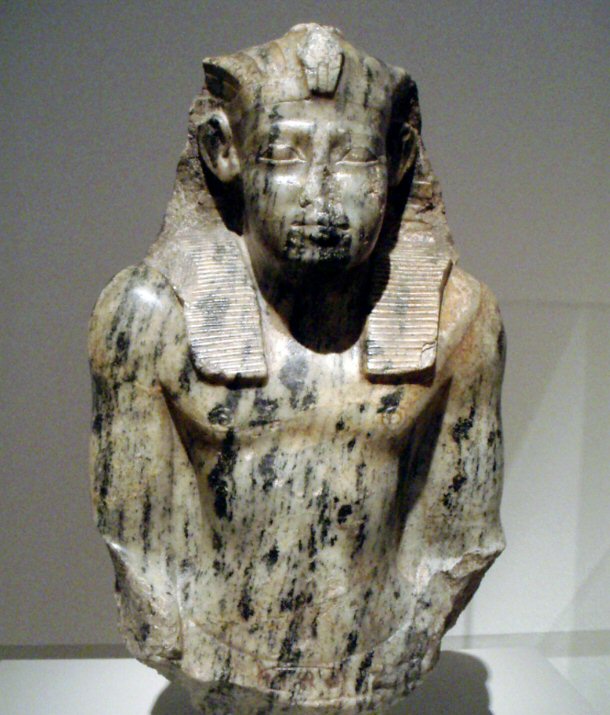Amenemhat I
Mentuhotep IV was the last representative of the family of the Theban princes, and Amenemhat I was the first ruler of a new dynasty. This is confirmed by his choice of his Horus name 'Whm-mswt that means 'He who repeats births', which suggests that he was the first of a new line. Despite this definite dynastic change, there does not seem to have been any major political disruption in Egypt.
This is to say that the transition from the Eleventh to Twelfth Dynasty was not a totally smooth one, since it appears that there was at least two other claimants to the throne: a man called Inyotef and another in Nubia called Segerseni, with whom Amenemhat I was probably still battling in the first few years of his reign. Links with the Eleventh Dynasty had not after all been broken: the officials, like the new rulers themselves, continued to trace their power back to the previous regime. Even the rise to power of Amenemhat I might not have been a shock to the system, for at this time the royal succession perhaps depended as much on the choice expressed by the Theban princes as on the king's familial connections with his predecessor.
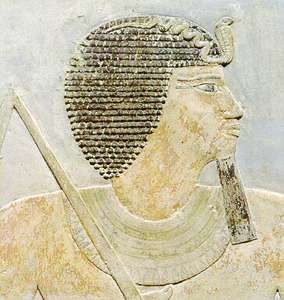
Amenemhat I continued the new ideological standpoint taken up by Mentuhotep IV by adopting Sehetepibre (which means "He who appeases the heart of Re") as his coronation name. His own name Amenemhat (which means "Amun is at the Head"), served to announce a political programme that was to combine the primacy of Amun with a return to Heliopolitan Theology, thus creating god Amon-Re, on whom the new pharaohs were to base their authority.
Amenemhat himself was not a Theban but the son of a woman from Elephantine called Nofret and a priest called Senusert. In the Eighteenth Dynasty, it was Senusert, Amenemhat's father, who was considered the actual founder of the Twelfth Dynasty. The new ruler used literature to publicize the proofs of his legitimacy. He turned to the genre of oracle: a recital in the mouth of Neferti, a Heliopolitan sage who bears certain similarities to the magician Djedi in Papyrus Westcar. Like Djedi, Neferti is summoned to the court of King Sneferu, in whose reign the story is supposed to have taken place. But the reason for the choice of Sneferu is not the same in both cases: at the beginning of the Twelfth Dynasty, he had become the model of good-natured kingship to whom the new kings traced their origins.
Neferti conjures up a dialogue at the end of which announcing the appearance of Amenemhat under the name of Ameny. Amenemhat I is known to have built some monuments at Bubastis, El-Khatana, and Tanis. He must have sent an expedition to Elephantine soon after his accession to the throne. He placed Khnemhotep I, governor of the Oryx nome, in charge of this expedition. It traveled up the Nile in twenty boats, possibly reaching Lower Nubia where it would have encountered the supporters of Segerseni. Amenemhat I also undertook a tour of inspection in Wadi Tumilat, where he ordered the construction of the fortifications known as the 'Walls of the Prince'.
Amenemhat I reigned for 20 years, a span of time taken as a turning point. For it was then that he began a co-regency with his eldest son Senusert. Thus he started a practice that was systematically followed throughout the Twelfth Dynasty. This association with his son coincided with the introduction of a new phase of foreign policy: the Heir Apparent acted as the king's deputy and was entrusted with the control of the army, probably in order to introduce the prince to the foreign nations with whom he eventually has to deal. This strategy was to assume great importance in Ramesside Period, when Egypt was fighting for overall control of the Near East. In Amenemhat's time, however, the king's main efforts were still directed towards Nubia. In the 23rd year of his reign, he undertook the first recorded Twelfth Dynasty campaign into Nubia, capturing Gerf Hussein and the ancient diorite quarries at Wadi Toshka.
A second campaign in the 29th year resulted in a much deeper attack into Nubian territory, which culminated in the foundation of a frontier fort at Semna on the Second Cataract. A statue of Djefaihapy, the Nomarch of Asyut in Amenemhat's reign, has been found at Kerma, suggesting that the Egyptians were at least present in Upper Nubia in the early Twelfth Dynasty. The suggestion that Djefaihapy was the governor of Kerma seems unlikely. More probably, the statue was taken there at a later period, perhaps during the reign of Senusert I.
On the Sinai front, General Nysumontu reported a victory over the Bedouins in the 24th year of Amenemhat's reign – this would have safeguarded the turquoise mining operations at El-Kadim in Sinai. At the same time, diplomatic relations were resumed with Byblos and the Aegean world. Just as Prince Senusert was returning from a campaign beyond the Wadi N atrun (against opponents seeking refuge with the Libyans), a crisis broke out: Amenemhat I was assassinated in about mid-February 1962 BC, after a secret conspiracy in his harem.
-
Building Program of Amenemhat I
Amenemhat I undertook important building works: (2)-At Karnak, a few statues and a granite naos have survived. It is even possible that it was Amenemhat I who established the original temple of Mut to the south of the precinct of Amon-Re. (2)-At Koptos, traces of his building work have also survived, where he partly decorated the temple of Min. (3)-At Abydos, he dedicated a granite altar to Osiris. (4)- At Dendera, he consecrated a gateway, also in granite to Hathor. (5)- At Memphis, he built the Temple of Path. (6)- At El-Lisht, he had a pyramid built for himself, about 50 km south of Memphis
Local Administration under the Rule of Amenemhat I
Amenemhat I was especially responsible for the reorganization of the administration. He transferred the capital from Thebes to Middle Egypt by founding a new city near El-Lisht, which was to serve as its necropolis. He named it ’Imn-m-h3t-Itt-t3wy ' which means "It is Amenemhat who has conquered the Two Lands", later abbreviated to ’Itt-t3wy. Like Mentuhotep II before him, He allowed those nomarchs who had supported his cause (including the rulers of the Oryx Nome) to retain their power. On one hand, he reinforced their authority by reviving ancient titles. On the other hand, he restricted their power in practice by appointing completely new governors (as at Elephantine, Asyut and Cusae) or by introducing new measures of land registration. Khnemhotep II recorded that Amenemhat I divided the nomes into a different sets of towns. He also redistributed the territories by reference to the Nile Flood and reintroduced military conscription (recruitment).
Senusert I ( Kheperkare )
There is some evidence that suggests that Senusert's rise to power took place with no problems, and that his long reign of 45 years was a peaceful one. On the other hand, this does not mean that Senusert I himself was the direct beneficiary of the harem conspiracy against his father. Senusert was a builder, and there is surviving evidence of his activity at 35 sites (including the Faiyum Region, which he was the first to exploit) as well as his pyramid at El-Lisht, to the south of his father's. He revived the Heliopolitan tradition by taking Neferkare as his coronation name. He also rebuilt the temple of Re-Atum at Heliopolis in the 3rd year of his reign.
On the occasion of his first Sed-Festival, in the 30th year of his reign, he erected two obelisks in front of the temple pylon at Heliopolis. His activities also extended to the temple of Amon-Re at Kamak. H. Chevrier found the blocks of a kiosk of Senusert I used as a fill in Karnak 3rd Pylon, of Amenhotep III. Chervier could recompose this kiosk that resulted to be Sed-Festival Kiosk of Senusert I. This kiosk, 'The White Chapel', is now exhibited in the Open Air Museum at Karnak. Senusert I remodeled the temple of Khenti-amentiu-Osiris at Abydos. Following this, the king's officials also erected numerous memorial stelae and small shrines at Abydos, thus initiating a practice that was to become standard in both Middle and New Kingdoms for devout men. In his foreign policy, Senusert I continued the work of the last ten years of his father's reign. He conquered Lower Nubia and in the 18th year of his reign, established a garrison at Buhen in the area of the Second Cataract.
He also exercised control over the Land of Kush, from the Second to the Third Cataract, including the island of Sai. And he maintained commercial links with the Kingdom of Kerma. In the Eastern Desert, exploitation of the gold mines to the east of Koptos and quarrying in Wadi Hammamat both continued: Senusert appears to have extracted sufficient stone blocks for 60 sphinxes and 150 statues, figures that correspond well with his activities as a builder. He also obtained alabaster from the quarries at Hatnub, sending at least two expeditions in the 23rd and 31st years of his reign. In the West, he consolidated his hold over the oases in the Libyan Desert, and particularly maintained the links between Abydos and Kharga Oasis. He continued to reinforce the country's north-eastern frontiers, thus protecting the mining work at Serabit El-Khadim in the Sinai.
Trade links with Syria and Palestine extended as far north as Ugarit during this period. According to some opinions, Senusert I was the one who started the canal connecting between the Nile and the Red Sea. This opinion, however, was opposed by some scholars who suggested that the canal with its function above-described did not exist until the time of Nykau about 600 BC.
Instruction of Amenemhat I
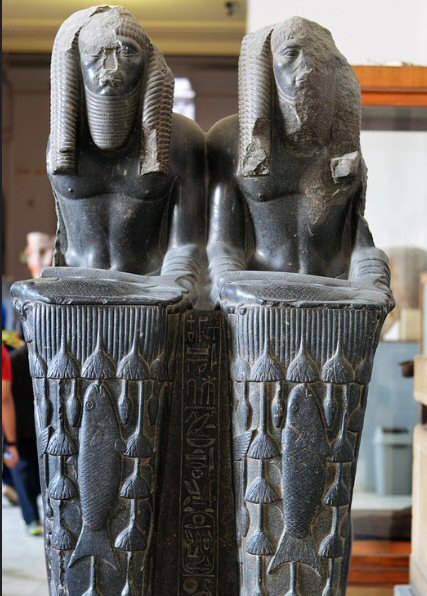
It hints at a dispute over the succession, and it was while Senusert was campaigning in Libya that he was told of his father's death. Amenemhat was almost surely murdered, and a text (of the Instruction) from Senusert's times presents the account supposedly spoken by his father from beyond the grave. The text is thought to be an early Twelfth Dynasty composition, possibly created on behalf of Senusert I to support his claim to the throne. The oldest surviving versions of the Instruction were not written any earlier than the first half of the Eighteenth Dynasty. The lack of early copies of the work does not exclude the possibility that it was composed at some time in the reign of Senusert I with the aim of justifying his rule. Before describing his own death, the king – like Khety III before him – passed on wise advice to his successor. The king passed on his authority to his successor. The rest of the text leads to some doubts as to whether there was a genuine co-regency of Amenemhat I and Senusert I.
Amenemhat II 
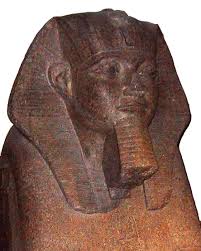
He ruled for almost 30 peaceful years after brief two-year-co-regency. The conquest of Nubia had been accomplished and while Amenemhat was still prince regent, he took part in a peaceful expedition led by Ameny, the Nomarch of the Oryx Nome. Amenemhat exploited gold and turquoise mines through local princes who were subject to Egyptian control, and the only military event recorded during his reign was the inspection of a fortress in Wasta by one of his officials. At the end of his reign, he also organized an expedition to Punt. During his reign, Egypt played an important role in the Near East as a whole. In 1936, the remains of a foundation deposit were found in the temple of Mount at El-Tod consisting of four chests filled with Syrian tribute in the form of silverware, including number of Aegean-style vessels and lapis-lazuli amulets from Mesopotamia. There is evidence of a Twelfth Dynasty cult of Sneferu in the reign of Modern Ankara.
The Egyptians themselves were exposed to Eastern influences, which began to have more impact on their civilization and art. Minoan ceramics have been found both at El-Lahun and in a tomb at Abydos, while at the same Egyptian objects were being taken to Ceret. Foreign workers were coming into Egypt, bringing with them new techniques and preparing the way for a slow infiltration that would eventually result in 'Asiatics' gaining temporary control over the country. Egypt extended particularly strong influence over Byblos, where the chiefs gave themselves Egyptian titles, wrote hieroglyphs and used artifacts originally made on the banks of the Nile. His pyramid complex, the so-called 'White Pyramid' at Dahshur (poorly preserved and not yet thoroughly examined) was unique in being set on a platform. His daughters were buried in the forecourt of his complex. The historical events of the Twelfth Dynasty come from a set of official records (known as the genut) that have been partly preserved in the temple at Tod.
These are some of the most useful surviving texts in terms of understanding the day-to-day life of the Egyptian Palace. In 1974, the Egyptian Antiquities Organization discovered one of the most important genut inscriptions at Mit Rahina. Although the inscription mentions Senusert I, it clearly belongs to the reign of his son, Amenemhat II. These annals contain very detailed descriptions of donations raised for various temples, lists of statues and buildings, reports of both military and trade expeditions, and royal activities such as hunting.
Senusert II ( Khakheperre)
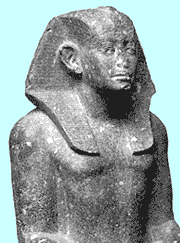
After a co-regency of almost 5 years, Senusert II succeeded his father to the throne. His reign of about 15 years was to be overshadowed by that of his own successor, Senusert III. Senusert II first undertook the extensive exploitation of the Faiyum area for hunting and fishing, with Crocodilopolis as its regional centre. This project was not to mature fully until the reign of his grandson, Amenemhat III. Senusert II undertook the construction of an irrigation system starting from Bahr Youssef and flowing into the future Lake Qarun. He achieved this by building a dyke at El-Lahunand adding to it a network of drainage canals.
Although the project was not finished until the time of Amenemhat III, the presence of these great building works in Faiyum was undoubtedly the reason why the royal necropolis was moved first to Dahshur, in the reign of Amenemhat II, and next to El-Labun. Senusert II built his funerary complex at El-Labun, a massive mud-brick structure with a rocky core and large limestone cross walls providing support to the brick sectors, which were then cased in limestone. The entrance to the pyramid was also on the south. The layout of corridors and rooms within the pyramid is unique.
Near by the pyramid, there are eight mastaba-tombs for the female members of the King's family. To the east of his funerary complex at El-Lahun, Senusert II established a community of workers engaged on these important building projects. The site of this community, now known as Kahun, was the first artificial town to be discovered in Egypt. Another better preserved instance of this type of settlement is the workmen's village of Deir El-Medineh, which dates mainly to the Ramesside Period. For a long time, Kahun was the only relatively complete example of the Egyptian settlement, but the excavations performed at various other sites, such as El-Amrna, Balat and Elephantine, have begun to shed further light on domestic architecture. Kahun Town has survived only in plan, but a large number of papyri have been discovered in its houses as well as in the temple of Anubis, which was located in the southern part of the settlement.
These texts are extremely diverse, providing evidence of artistic, economic and administrative activities. There are a number of different literary types, including royal hymns, episodes from the Tale of Horus and Seth, a fragment of a mathematical calculation, some judicial documents, some accounting texts, and fragments from temple archives covering the whole period of the Twelfth Dynasty. This does not mean that Kahun was Senusert II's capital, since Deir El-Medineh Settlement supplied an even larger number of texts but played no significant political role.
-
Senusert III ( Khakaure)

Turin Canon assumes him a reign of over 30 years. When he rose to the throne he had to deal with a political problem which his great grandfather, Senusert I had already attempted to address by his division of the vizier's office into two posts. The basic problem was that the families of local rulers had once become almost as powerful as the king himself, as we can deduce from the wealth of the tombs at Beni Hassan. Senusert III reduced the authority of these local rulers, who had been gradually transforming themselves into local dynasties. In this new system of government, the country was under the direct control of the viziers of three ministries: one for the North, another for the South, and the third for the 'head of the South', namely Elephantine and Lower Nubia. Each ministry was headed by one official with the help of an assistant and a council. Orders from the official were passed on to scribes. Such a reform left two basic consequences: the loss of the noblest influence and the rise of the middle classes, which can be observed in the increasing of votives dedicated to Osiris at Abydos. The King himself raised the status of his own home province by undertaking the construction of the temple of Montu at Medamud. Provincialism had appeared initially in the First Intermediate Period but it reached its peak in the Middle Kingdom. Medamud is a town located 8 km north-east from Luxor city.
It is known in Egyptian texts as 'M3dw', and 'Medamud' is the modem name. Dedicated to god Montu, the temple in it dates to the Middle Kingdom. In the Eighteenth Dynasty, many addendums were added to it. The long period of military inactivity in Nubia during the two preceding reigns had encouraged Sudanese tribes to move gradually north of the Third Cataract. Senusert III therefore undertook steps to deal with this threat. He began by enlarging the canal that Merenre had built near Shellal to allow boats to pass through the rapids at Aswan. Then in the 8th, 10th, and 16th years of his reign, he sent military expeditions against Kush. In the Ninth year of his reign, Egyptians were able to travel by boat up to the Second Cataract, for the campaigns of the 8th and 16th years of his reign had allowed the Southern border to be established at Semna. This frontier was reinforced by a chain of eight mud-brick fortresses between Semna and Buhen.
Senusert III built the fortress at Semna, and he set up stelae in the fortresses of Semna and Uronarti, which are the best examples of Egyptian military architecture. These stelae were set up at the southern borders, with their inscriptions reminding everyone of Senusert's conquest and punishments. He is known to have sent one military expedition into Syria-Palestine. His foreign policy was to reaffirm Egypt's influence over the Near East and Nubia. He built a mud-brick pyramid, measuring 60 m high, cased with limestone blocks at Dahshur. Mastaba-tombs were built for his immediate family within the enclosure wall for the queens and the princess in a form of a complex similar to that of the Third Dynasty. Neither the King's chamber nor the sarcophagus appears to have been in use. However, at the southern end of Abydos, a second funerary complex was constructed for Senusert, consisting of a subterranean tomb and a mortuary temple, where a cult for the King lasted for over two centuries. Some scholars suspect that the Abydos complex may have been his actual burial place, but no remains were found there either.
-
Amenemhat III (Nymaatre)


Amenemhat III was honored and respected from Kerma to Byblos and during his reign numerous Eastern workers, from peasants to soldiers and craftsmen came to Egypt. Further, he strengthened the frontier at Semna. The country went under his reign for 45 years, during which, it reached the peak of prosperity: peace was both at home and abroad, and the exploitation of Faiyum went hand-in-hand with the development of irrigation and the enormous growth in mining and quarrying activities. He undertook extensive exploitation in the Sinai Reign in both the turquoise and copper mines. Between the 9th and 45th years of his reign, no less than 49 texts were inscribed at Serabit El-Khadim, as well as other 10 texts at Wadi Magarna and Wadi Nasb. The Temple of Hathor at Serabit El-Khadim was enlarged and the mines were given defenses against Bedouin attacks. This construction program in Sinai was continued by Amenemhat IV.
The expeditions to quarries elsewhere in Egypt (to Tura, Wadi Hammamat, Aswan or the area around Toshka) also flourished. As for his building achievements, apart from fortifying Semna (he enlarged some of the fortresses there) and constructing the Temple at Quban in Nubia, he dedicated himself to the development of the Faiyum Region. His name became closely associated with the area in the Greco-Roman Period, when he was worshipped under the name of Lamares. Excavations at Biahmu (north-west to Faiyum) revealed two colossal granite statues of the seated figure of Amenemhat III resting on a limestone base. He also constructed and decorated the Temple of Sobek at Kiman Fares (another Faiyum site), expanded Ptah Temple at Memphis, and built a chapel for Renenutet (goddess of the harvest) at Medinet Maadi. He constructed a temple at Medinet Maadi (south-west to Faiyum) and another at Medinet Shedet.
Above all, he built for himself two pyramids, one at Dahshur and the other at Hawara (south-east to Faiyum). Beside the Hawara pyramid were found the remains of his mortuary temple, which Strabo described as the Labyrinth, because of its maze of rooms and corridors. Although described by six classical writers including Herodotus and Strabo, no details of its plan were coherent. Therefore, efforts at reconstructing its original appearance have been unsuccessful. Amenemhat's burial chamber at Hawara was originally intended to be shared with Princess Neferuptah, who was probably his sister or daughter, but she was later transferred to a small, separate pyramid (now almost totally destroyed) a few kilometers away.
-
Amenemhat IV (Maakherure)
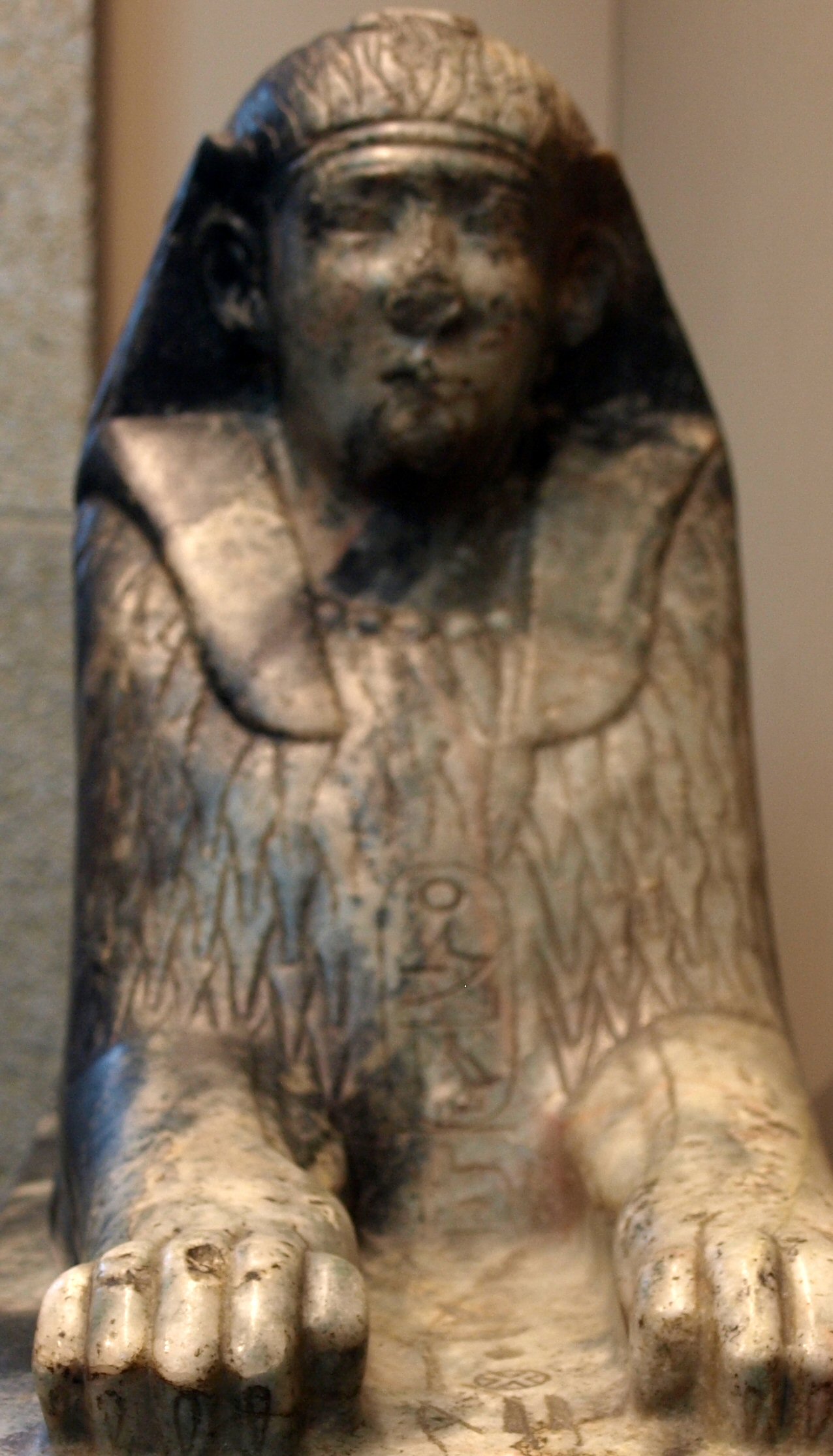
He succeeded his father in 1798 BC after a brief co-regency. He continued to give the Faiyum Reign a high priority. It was probably Amenemhat IV who built the temple of Qasr El-Sagha, 8 km north of Lake Qarun. Further, he finished the construction of the temple that his father had begun at Medinet Maadi dedicated to Sobek of Shedet. It consisted of a pronaos in the form of a hypostyle hall leading to three chapels for the two deities and Amenemhat III. The sanctuary was later enlarged, and then redecorated much later, during the reign of the Emperor Hadrian. His reign extended over less than 10 years and by the time he died the country was once more moving into a decline. Reasons for this decline were similar to those that led to the Old Kingdom brought to an end. The excessive length of the reigns of Senusert III and Amenemhat III (about 50 years each) led to various problems. This situation perhaps explains why, just as in the late Sixth Dynasty, another queen – namely Sobekneferu – rose to power.
Sobekneferu
She was a sister (and possibly also a wife) of Amenemhat IV. She was described in her titulary as a 'Woman Pharaoh'. Usually the queen uses feminine titles, but several masculine ones were also used. She constructed her pyramid near that of Amenemhat III in Hawara, where some monuments bearing her name were found nearby. Three headless statues of the queen were found in the Faiyum Region, and a few other items bearing her name. Some statues belonging to the queen show her costume combining elements from male and female dress. The Northern Pyramid at Mazghuna, in the southern part of Dahshur, has been ascribed to her, while the Southern Pyramid probably belongs to Amenemhat IV. If this is to be true, Sobekneferu had not actually used this pyramid, which perhaps indicates that her short-spanned reign (lasting only three years according to the King-Lists) ended in violence. Yet, there is no proof to sustain this suggestion.
